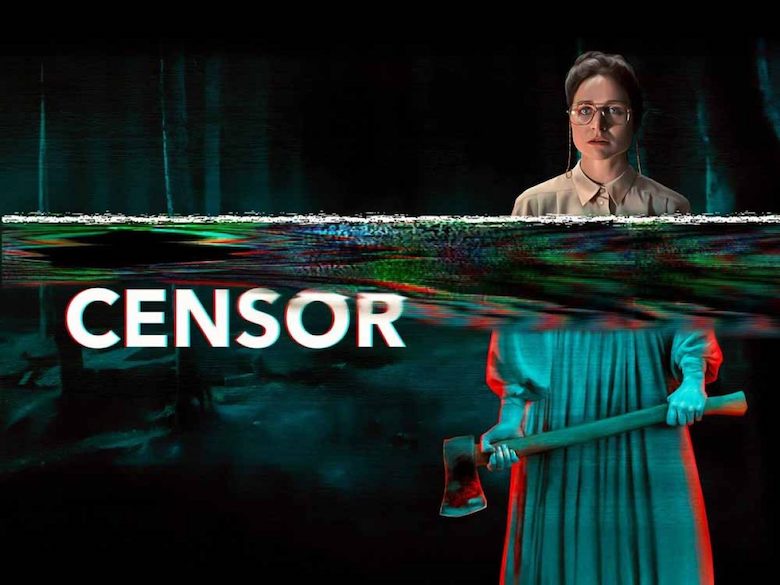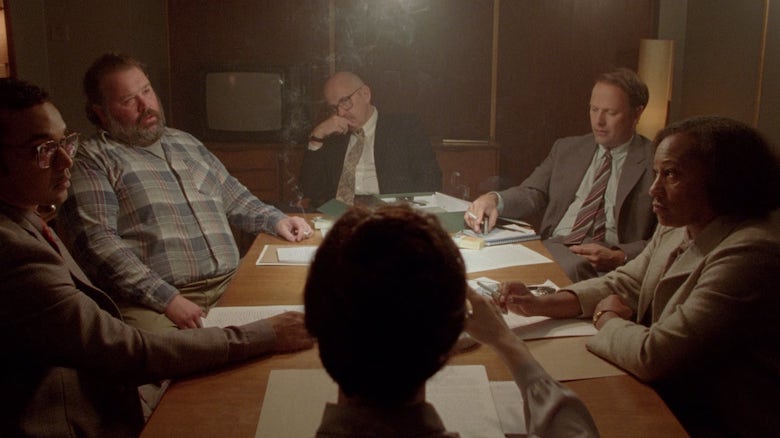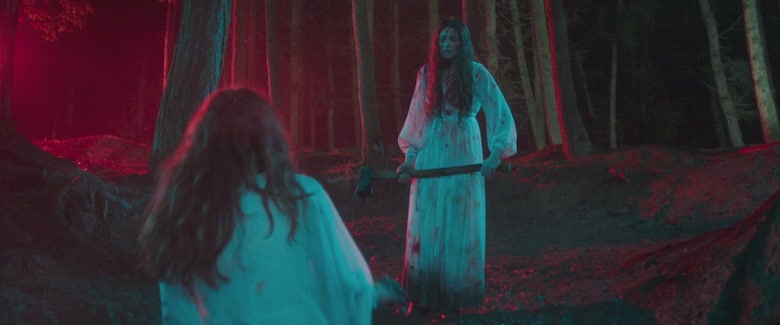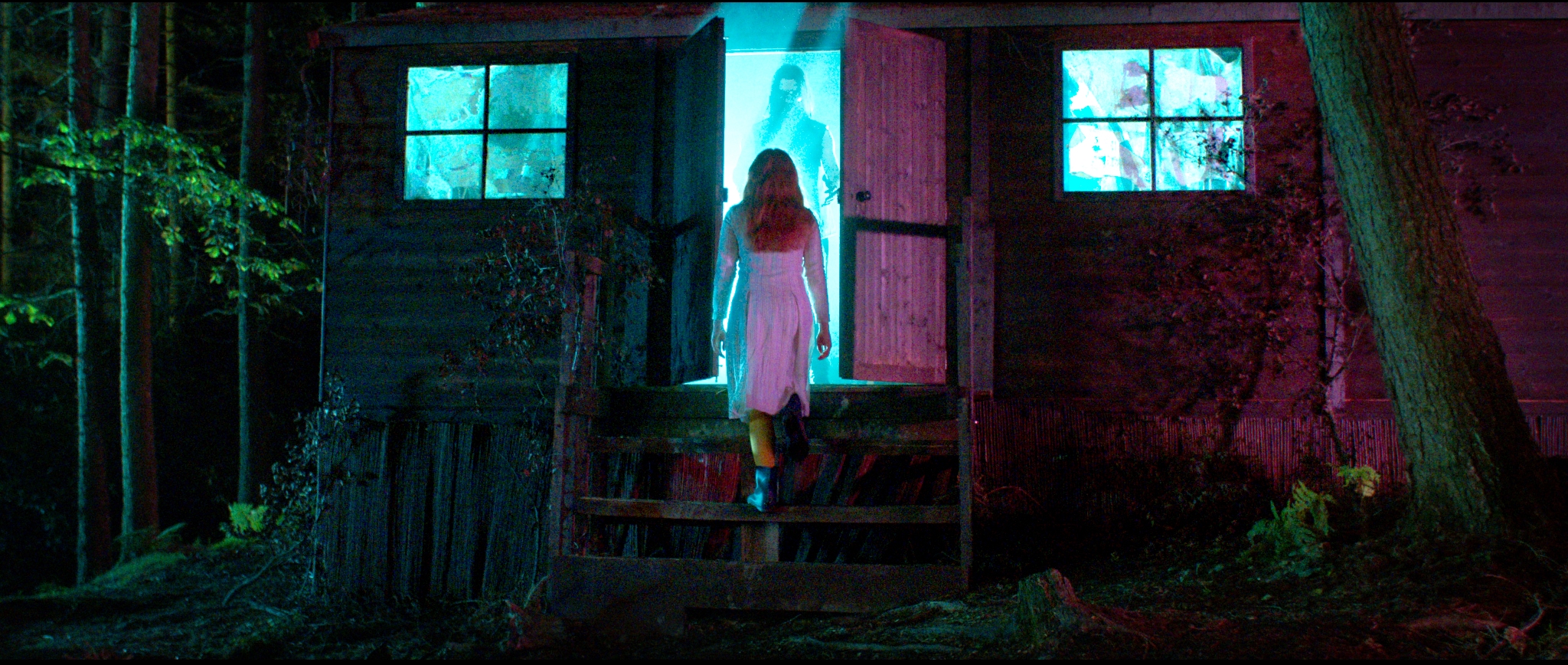As Enid and her parents sit for a terse lunch, her mother asks ‘How is work? Anything you’d recommend?’ Enid, a film censor for the BBFC at the height of the hysteria around Video Nasties in the 80’s here in the UK says back:
It’s not entertainment, mum. I do it to protect people.
Video Nasties is a term most horror aficionados are familiar with. They’re the straight to VHS gore-fest films that haunted the video players and video shops of the world in a renaissance style revival of the genre following a late 60’s/ early 70’s boom. They were widely panned, low budget, shake and go special effect marvels that brought back the pleasure filled catharsis of horror entertainment not experienced since the penny dreadfuls of the 1900s.

Immediate gratification was their byword. Violence was their headline. And conservatives (both big and small C) hated them. They were the symptoms of a failing Britain, a heathen island of counterculture vampires mainlining the blood from the necks of hard working, wholesome nuclear families that paid their taxes on time and listened to The Arches.
The movie Censor references this. In fact, it presses our face against this hypocrisy with no thought to our comfort or understanding of 1980’s social politics. The film displays Margaret Thatcher demonising those involved in the miner’s strikes of the time (a ‘trade dispute’) by equating them with communist revolutionary groups attempting to undermine parliamentary democracy (insert House of Lords critiques here.)
Explaining the Movie Censor
Censor is a movie about a young film censor called Enid who deals with both the backlash of an in-film movie called Deranged as well as its influence on a real life killing and the trauma of having lost her sister in the woods when she was very young. She blames herself for both incidents and the rest of the world seems to also.
After a journalist connects Enid with the certification of the film, her phone rings off the hook with men phoning to tell her how she should be murdered, be cut to pieces, raped, and the plethora of other imagery you can find under any Tweet by any successful woman who dares to have an opinion online.
She becomes public enemy number one and the face of the censorship debate around Video Nasties. Enid finds herself being asked to censor a film by Frederick North called Don’t Go In The Church that seemingly echoes the day her sister went missing.

If you want to read about how meta this film is, there’s bound to be plenty of material online. From the way the film is shot, to the denouement, to the final frame, meta-analysis is bountiful and will make many an excellent article.
Instead, I’m going to focus on how the composition of the film literally haunts Enid as she descends further and further (SPOILERS) into psychosis and – my favourite topic of all – how this film uses horror to strike back at those that pan anything that proudly calls itself HORROR and not some watered-down version of it (looking at you SUPERNATURAL THRILLER, I mean c’mon!)
The Composition of Censor
As Enid watches Don’t Go In The Church for the first time, director Prano Bailey-Bond reveals how we can see the seeds of the obsession that’s about to grow within her. The lights from the projector behind her are strewn across the top twenty percent of the frame. Enid’s head bobs amongst the light as it passes onto the screen in front of her. With the many fragments of memory we see from Enid’s point of view throughout the film, it becomes as if the light is collecting these residual fragments and creating a collage of fiction and reality on the screen before her.

It was as if Enid was drowning, the light from the projector the water’s surface she couldn’t quite break through. The thin line between the film and her own life beautifully blurred in soft whites and meandering dust particles.
Bailey-Bond haunts Enid with screams throughout the entire film. They pound from the rooms in which other censors are rating Video Nasties, they echoes through underpasses as she walks home from work, and they torment her in her dreams. The source of these screams in the first and second act are always out of shot, and just a touch lower than the speaking volume of the characters. They push Enid constantly, following her like cat calls. One of her male colleagues says as she is visibly shaken, ‘Someone’s losing the plot.’ He has no idea how incorrect he is. She isn’t losing the plot at all, rather, the plot is tormenting her.
Stop Blaming Horror
It is Bailey-Bond’s expertise here that truly breathes life into a staunch defense of the value of horror in twentieth and twenty-first century cinema. Horror that lies out with the cinematic canon (The Exorcist, Rosemary’s Baby, The Texas Chainsaw Massacre, etc.) is hard to defend. Unless a horror film is revolutionary either in style, tone, content, or direction, it is either lambasted or forgotten about.
That is, of course, unless it is controversial.
— FOUNDATIONS OF HORROR —
Further explore these subgenres & tropes. more>>
#Meta horror

Controversy puts bums in seats. It’s been said that once a horror is condemned by a Mum’s Alliance for Children’s Cinema or Christians Against Satan in Films League or their ilk, then the film will be a bonafide hit (though Lord knows I cannot remember who said it!).
The most direct way the film does this is through admitting that the man who murdered his wife and children – and who the media then said was influenced by the film mentioned above, Deranged – hadn’t even seen the film. The hysteria was all an invention. “People think I create the horror, but I don’t. It’s out there already, in all of us,” said Frederick North, the director that Enid hunts down in hopes of finding her sister. He says these words as he asks Enid to “step into the light and let me see you.”
But it doesn’t simply end there.
Explaining the Ending: I’m Evil, You’re Evil
We’re all evil, we get it, so what. We’re told this in every Meta horror since Scream and every director of controversial content (I see ya’ Tarantino!) falls back to this default position. Real life is the monster, not I, sir – not I!
What’s far more interesting is that we are not just evil and in need of horror as a catharsis to stop us electing a pro-Purge politician to sort us out. We are desperate too. The tour de force of this film is not its solid commentary on the blurred lines between horror cinema and our own terrible acts; but how every film is a catharsis. Every Rom-Com is a release of love for the lonely, the couple’s in trouble, those who’re broken up. Every action film is chance for us to feel the awe-inspiring rush of crashing our cars into helicopters and shooting the baddies. Superhero films let us imagine a world where Superman could happen, where Tony Stark’s death means the saving of the universe. America’s obsession with a happy ending (I’ll die on this hill, come for me) is the cathartic ideal we all want for ourselves.
Once the movie Censor‘s denouement comes, its savage final act, is complete, it’s not a horror film we’re left with – it’s delusion. As Enid writhes in the mud, her white dress costume covered in fake and real blood, she begs:
Please you have to be her. Please. You have to be her. Please. You have to be her. Please. You have to be her. Please. You have to be her. Please. You have to be her.
As the movie Censor ends, Enid and her parents are reunited with her little sister. Enid has brought her home. Her parents weep on their perfect lawn, their clothes crisp, their hair done. Enid stands back and looks at what’s she’s done. She’s put her family back together again. She can leave the blame and regret behind her and move on. The colours of the shot are warm, homely, each frame tinged with yellow hues. A second or so of static erupting through with the grey-coloured shots of reality are not enough to break the spell, its just an inconvenience that a wiggle of the arial will straighten out, returning the picture to crystal clear again.
The final words we hear in the movie Censor are the utopian news headlines that mirror the reality heard at the film’s beginning. Video Nasties have been eradicated from the streets of Britain and crime rates have dropped to zero, the balance between cause and effect has been found as the news reporter promises ‘there’s nothing to be afraid of anymore.’
Additional Reading
Censor Review: A dark meta-horror debut set during the infamous Video Nasties era
Censor’s Layers of Horror Make for a Creepy Meta Narrative
Last Updated on September 29, 2021.

